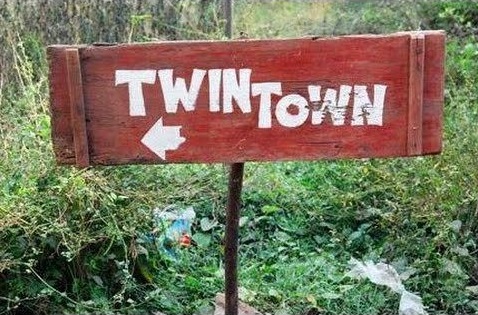In Kodinhi, India, a village of 2000 families, there is an unusually high rate of twin births with 240 pairs reported. This is significantly higher than the global average and earns the village the nickname “Twin Town of India.”
Kodinhi – The Twin Town Of India

Despite having a low overall rate of twinning, India is home to the small village of Kodinhi, located in Kerala, 30 km west of Malappuram, which has an exceptionally high number of twins born per year, compared to the global average. With a population of just 2,000 people, the village stands out for its twinning rate.
The small village of Kodinhi in South India, situated among backwaters and with a population of only 2,000, is drawing the attention of scientists worldwide due to its unusually high twinning rate. The village is home to a staggering 240 pairs of twins and triplets, equating to over 483 individuals, and despite ongoing research, the reason for this high rate remains a mystery.
In Kodinhi village, the oldest twin pair currently residing there was born in 1949. The village also boasts a unique organization known as “The Twins and Kins Association,” the first of its kind globally, which brings together twins from the village.
The Eerie Facts Behind The Twin Town
Adding to the mystery of the high twinning rate in Kodinhi is the fact that even women from the village who marry and move to other faraway places still give birth to twins, and similarly, men who move to Kodinhi and marry a local woman also have a high chance of having twin children.
Is There Something In Their Diet?
Benin, a country in Central Africa, holds the distinction of having the highest national twinning rate in the world, with a remarkable 27.9 twins per 1,000 births. Research has suggested that diet may play a role in this high rate, as certain foods are known to increase the likelihood of twinning.
The Yoruba tribe, found in areas such as Benin, Nigeria, and other high twinning rate regions, follow a traditional diet which includes large amounts of cassava, a vegetable similar to yam. This dietary habit has been suggested as a possible contributing factor to the high twinning rate among the Yoruba people.
For several decades, scientists have been investigating the link diet and twinning, though no specific and definitive correlation has been found. This is also the case with the people of Twin Town (Kodinhi), whose diet does not appear to differ significantly from that of nearby areas with much lower twinning rates.
The Twinning Phenomena Of Kodinhi Village Remain Unexplained To This Day
The twinning rate in Kodinhi, known as Twin Town, is extremely high with 45 twins born per 1,000 births, compared to the national average of 4 per 1,000 in India. This phenomenon has been studied by local doctor, Krishnan Sribiju, who has found that the twinning rate in the village is actually on the rise.
Despite ongoing research, scientists have been unable to determine the cause of the high twinning rate in Kodinhi, also known as Twin Town. In the last five years alone, 60 pairs of twins have been born and the rate of twinning has been increasing annually. Factors such as diet, water, and marriage culture have been considered, but no conclusive explanation has been found to explain this phenomenon.
Here’s Where Is The Twin Town Of Kodinhi Located In India
Kodinhi, also known as Twin Town, is located in Kerala, India. It is situated around 35 km south of Calicut and 30 km west of Malappuram, the district headquarters. The village is surrounded by backwaters on three sides, with only one side connecting it to the town of Tirurangadi in the Malappuram district.



